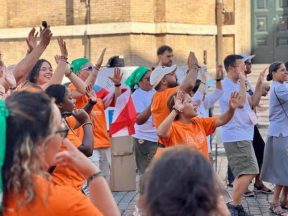Kenya. Pökot, the Parpara Ceremony.
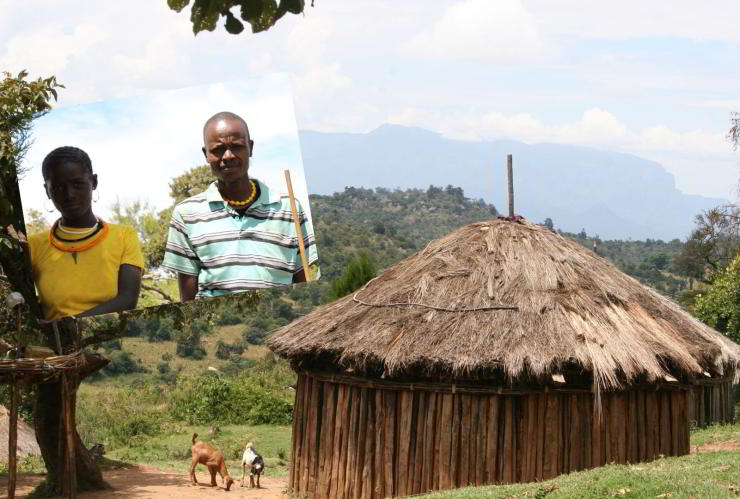
The Pökot are a Nilotic people. They live in Western Kenya, in the West Pokot and Baringo districts, and Uganda, in the Karamoja region. We look at the Parpara ceremony, a rite that every Pokot woman must perform before giving birth to her first child.
It is a long rite that lasts all night. It is usually performed around the seventh month of pregnancy. The presence of the father of the child is very important in this ceremony, as the child to be born will belong to his family. Parpara is performed only once for each woman. The only exception is if the woman does not succeed in giving birth to a live child. In this case, it would mean that the first parpara was not done properly and would have to be repeated.
This ceremony attempts to remove all the sins committed by the ancestors of the father of the child. They have to be cleansed so that the woman can have a successful birth.The people involved in this rite are: the wife, the husband, the husband’s father and mother, the close relatives on both sides, and two young children, a boy and a girl, who act as sort of godparents to the child still in the womb.
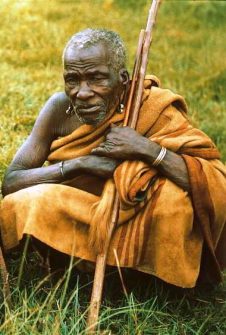
The master of the rite is the grandfather of the man. File swm
A few days before the date set for the parpara, the husband brews more than six gourds of beer. When the beer is ready, the wife’s relatives and the husband’s parents are invited to the homestead. The husband’s family must welcome the wife’s relatives with a few gourds of beer. After a few drinks, the husband’s father, the future grandfather, starts a song to welcome the guests. As darkness falls, the guests are led to the herd of goats inside the house where the parpara will take place.
The master of the rite is the grandfather of the man, or the father of the man if the former has already died; he is called the porporin. Once the wife’s relatives are out of the house, the porporin gives a large jar of honey and a small one to the young boy who helps with the ceremony.
The presence of the boy and girl is very important; they predict the successful birth of the young mother-to-be, who is happy about her pregnancy but nervous. The first birth of a Pokot woman is always difficult and painful because the girl’s circumcision has left a scar that needs to be reopened.
Dancing and drinking the whole night
When the time comes, the porporin begins the rite by taking a wooden bowl and putting in some earth from an ant hill, roots from a fig tree and pieces of bark from another tree. Then the old man begins to mix all these ingredients, making a muddy substance.
As the old man’s hands move slowly and pompously, the others respond to his song. Every now and then he would stop and take a sip of beer, and then he would continue for a long time.
The singing goes on for a long time as the old man mentions many of the known sins and mistakes of their ancestors that need to be purified so that their sins do not affect the birth.
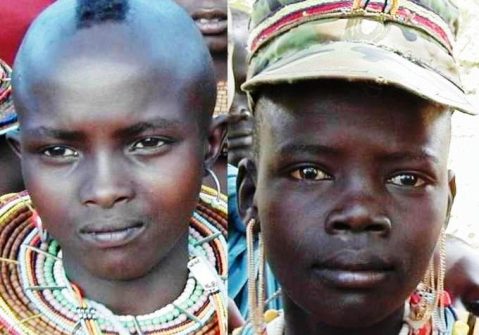
The presence of the boy and girl is very important; they predict the successful birth of the young mother-to-be. File swm
Then the old man takes a brand from the fire and puts it in the wooden bowl. He takes a drink, pauses to breathe, during which time people can talk about anything else, and after a while, starts the same ritual again.
The young couple do not need to be there yet, although the man could be there. People dance and drink all night. At dawn, all the people who are on the homestead, relatives and guests, come to the hut where the parpara has been celebrated. Now the couple are told to sit down at the narrow entrance of the hut.
The two small children, a boy and a girl, were brought and sat by their sides: the boy on the right, the girl on the left. The husband is completely naked, and his wife sits on his left hand, covered with a wrap of animal skin. The porporin begins to mix the mud again and sings.
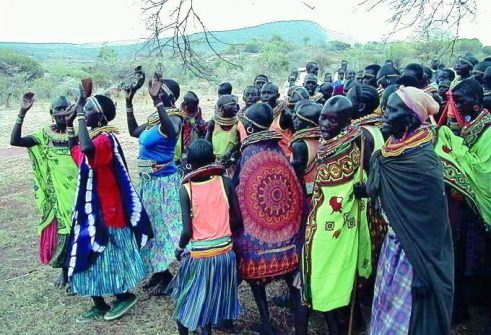
People dance and drink all night. File swm
When this is done, the mothers of the couple leave the hut and stand in front of the entrance. The porporin takes a small jar of honey and two small gourds of milk, one from a cow that has just given birth and the other from a goat. He took a piece of a palm branch and smeared milk and honey on the couple’s mouths. But they cannot lick it. Both milk and honey are symbols of wealth and a sweet future. Some of the milk and honey is also poured on their heads. The rest of the milk and honey is given to the two small children sitting on their sides to drink and lick.
When the ceremony is over, everyone sings together. While everyone is singing, they go around the couple and the two children sitting in front of the door of the hut. When the song is over, everyone leaves the hut and the couple and the two children sit outside the door. They sit on a white goatskin, their legs close together, next to each other. It is about the time when the sun comes out, and as most Pökot houses face east, the sun should shine on them.
Then the porporin takes the basin full of mud and spits into it. Soon after, all the people present, both men and women, spit into it as well. The spitting, which is done specially, is a sign of blessing.
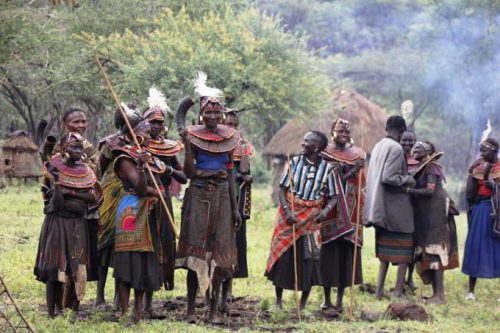
When the ceremony is over, everyone sings together. Shutterstock/Cheboite Titus
Everyone blesses those who will be parents, everyone is with them. The old man continues the ceremony, quietly smearing the mud on the husband and then on the wife. He also smears a little on the two children. Then the porporin washes the couple’s bodies with milk and pours some honey on them, as a sign of purification and sweet future blessings. When the ceremony at the entrance to the hut is over, all those present walk in procession to the kraal, at the entrance of which there are two branches. The leader of the procession removes them and everyone enters the kraal. They walk around the kraal three times, following their right hand, singing as they go.
At the end, the porporin calls the young couple to the centre of the kraal and blesses them. The whole parpara ceremony now ends. The birth will be without any problems. But if there are, the parpara may have to be repeated. (Open Photo: File swm)
Daniel Partany



